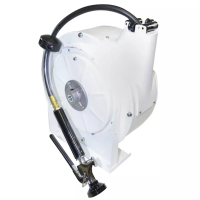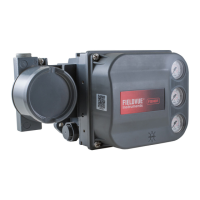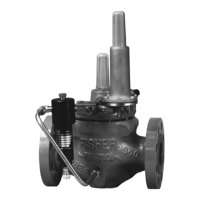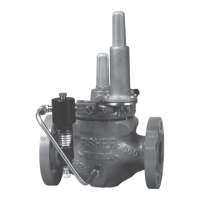Quick Start Guide
D103214X012
DLC3010 Digital Level Controller
February 2016
25
If it is necessary to use the Partial Calibration methods when the displacer is overweight, the following transformation
may be used:
An interface or density application can be mathematically represented as a level application with a single fluid whose
density is equal to the difference between the actual SGs of the fluid covering the displacer at the two process
extremes.
The calibration process flows as follows:
D Change the PV mode to Level.
D Set the Level Offset to zero.
D Set the Range Values to:
LRV = 0.0,
URV = displacer length.
D Capture Zero at the lowest process condition (that is, with the displacer completely submerged in the fluid of
the lowest density NOT dry).
D Set Specific Gravity to the difference between the SGs of the two fluids (for example, if SG_upper = 0.87 and
SG_lower = 1.0, enter a specific gravity value of 0.13).
D Set up a second process condition more than 5% of span above the minimum process condition, and use the Trim
Gain procedure at that condition. The gain will now be initialized correctly. (The instrument would work fine in
this configuration for an interface application. However, if you have a density application, it won't be possible to
report the PV correctly in engineering units if the instrument calibration is concluded at this point.)
Since you now have a valid gain:
D Change the PV mode to Interface or Density,
D reconfigure the fluid SGs or range values to the actual fluid values or extremes, and
D use the Trim Zero procedure in the Partial Calibration menu to backcompute the theoretical zerobuoyancy
angle.
The last step above will align the value of the PV in engineering units to the independent observation.
Note
Information on simulating process conditions is available in the Simulation of Process Conditions for Calibration of Fisher Level
Controllers and Transmitters instruction manual supplement (D103066X012), available from your Emerson Process Management
sales office or at www.fisher.com.
Following are some guidelines on the use of the various sensor calibration methods when the application uses an
overweight displacer:
Weight‐based: Use two accurately known weights between minimum and maximum buoyancy conditions. The full
displacer weight is invalid because it will put the linkage on a stop.
Min/Max: Min now means submerged in the lightest fluid and Max means submerged in the heaviest fluid.
